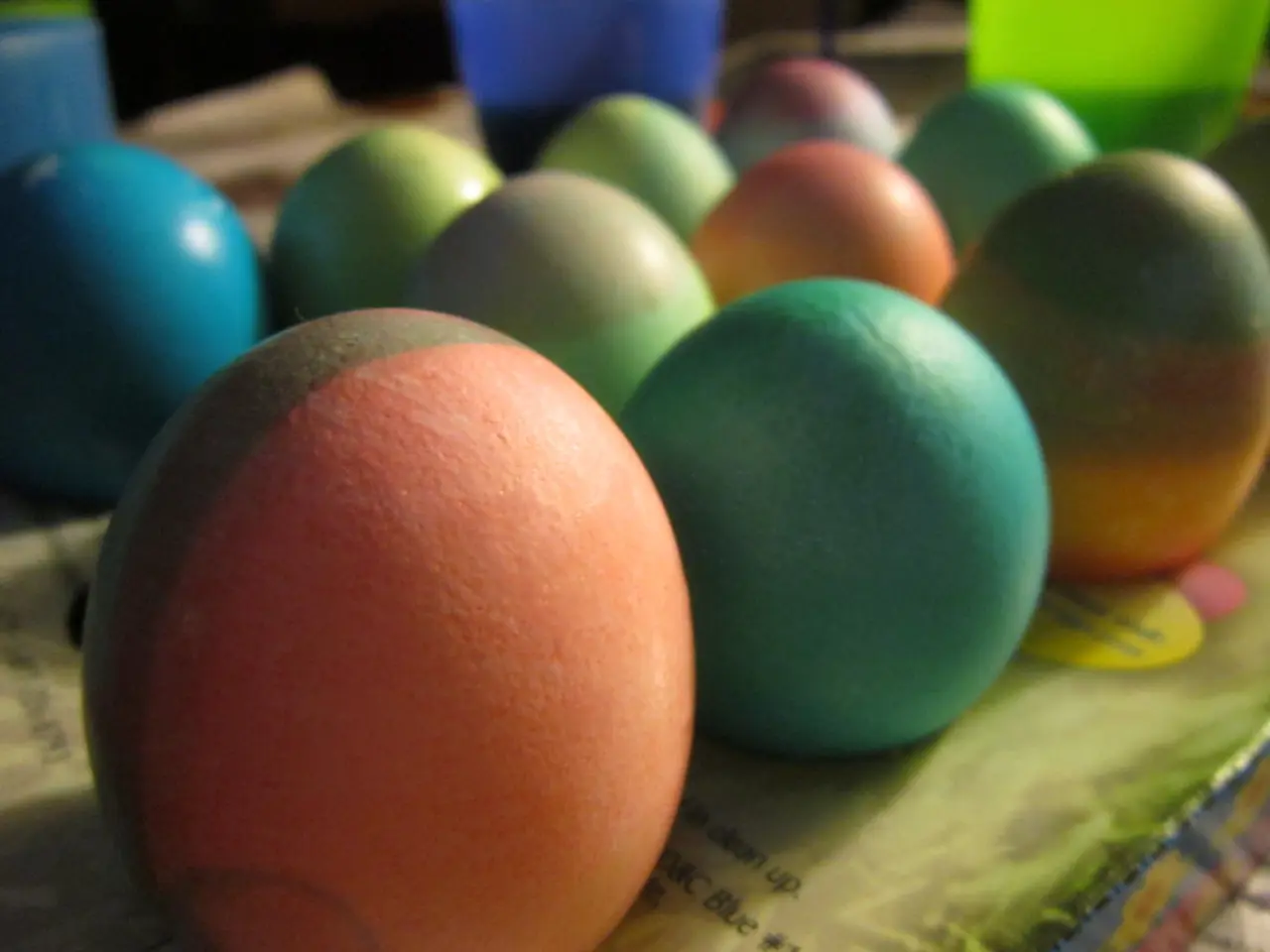Essay on the Scientific Aspects of Preparing Ideal Eggs
Discovering the Perfect Egg: University of Naples Scientists Unveil Periodic Cooking Method
Cracking open an egg can often result in a chalky yolk or a runny one, but a team of researchers from the University of Naples Federico II may have found a solution. They have developed a novel method for cooking the perfect egg, ensuring both yolk and egg white are creamy.
The method, dubbed "periodic cooking," involves alternately exposing the eggs to boiling water (100°C) and then to cool water (30°C) every two minutes, repeated over about eight cycles. This technique contrasts with traditional hard-boiling or soft-boiling, where eggs are simply cooked in hot water at a constant temperature until the desired doneness is reached.
The key differences lie in temperature cycling, extended total time, and texture control. By alternating temperatures, the method can reduce overcooking risks such as rubbery whites or dry yolks, aiming for an ideal balance between firmness and creaminess.
| Aspect | Periodic Cooking | Traditional Hard-Boiling | Traditional Soft-Boiling | |-----------------------|--------------------------------|------------------------------|------------------------------| | Temperature | Alternates between 100°C & 30°C | Constant ~100°C | Constant ~85-95°C | | Cooking Duration | About 16+ minutes (multiple cycles) | 9-12 minutes (hard) | 4-6 minutes (soft) | | Texture Control | Higher precision via cycling | Less precise, risk of overcooking | Softer yolk, tender whites | | Method Complexity | Requires attention & timing | Simple, set it and forget it | Simple, set it and remove early |
This scientific approach was developed to improve consistency and quality in boiled eggs, offering a nuanced alternative to the straightforward traditional techniques. While the new method may take a bit longer than traditional cooking methods, the researchers believe it is well worth the effort for the superior texture and taste it provides.
Professor Di Maio, who personally cooked 160 eggs for the sensory analysis, has been converted to the periodic cooking method. Emilia Di Lorenzo, one of the researchers, confesses that she does not like eggs at all, but the culinary experiment may have been more than just a scientific study for her.
The team tested their method by cooking numerous eggs and analyzing the results using Fourier transform infrared (FT-IR) spectroscopy. FT-IR spectroscopy was used to probe the chemical structure of the egg yolk and white to assess how protein breakdown had affected the texture of the eggs cooked using different methods.
The ideal temperature to cook an egg yolk, according to the study, is around 65 degrees Celsius, while the egg white should be cooked at around 85 degrees Celsius. This meticulous process ensures that both the yolk and white are cooked optimally, resulting in a perfect egg every time.
So next time you crack open an egg, consider giving the periodic cooking method a try. It may just change your perspective on eggs and transform your breakfast routine.
- The scientists from the University of Naples Federico II have proposed a new method called "periodic cooking" for cooking the perfect egg, which alternates the temperature between boiling (100°C) and cool (30°C) water to achieve both creamy yolk and egg white.
- The periodic cooking method takes around 16+ minutes and offers a superior texture and taste compared to traditional hard-boiling or soft-boiling methods, although it may require more time and attention.
- In order to improve consistency and quality in boiled eggs, the team used Fourier transform infrared (FT-IR) spectroscopy to analyze the chemical structure of the egg yolk and white, ensuring optimal cooking of both components.
- This scientific approach to cooking eggs provides a health-and-wellness-focused solution for those seeking a high-quality and nutritious food-and-drink option, as well as offering a nuanced alternative to traditional cooking techniques with potential lifestyle benefits.




